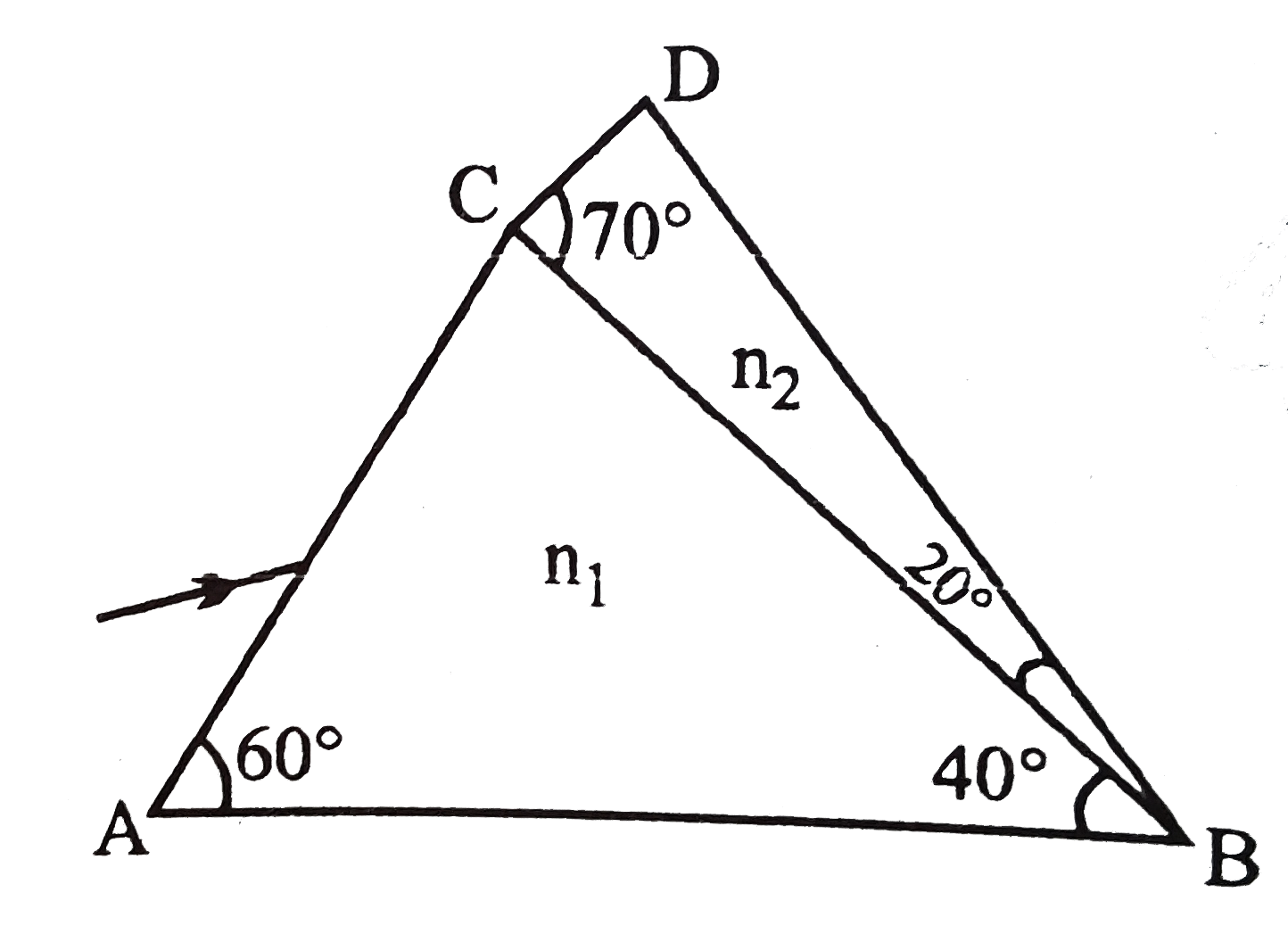A rod has variable co-efficient of linear expansion α=x5000. If length of the rod is 1 m . Determine increase in length of the rod in (cm) on increasing temperature of the rod by 100∘C.
_S01_121_Q01.png) Solution in Gujrati
Solution in Gujrati
The correct Answer is:1
Increase in length of dx = αl0ΔT=(x5000)(dx)(100)=x50dx
⇒ Total thermal expansion = ∫10x50dx=(x2100)10=1100m=1cm
Topper's Solved these Questions
- GEOMETRICAL OPTICSBOOK - ALLEN CHAPTER - GEOMETRICAL OPTICSEXERCISE - EXERCISE -01
65 Videos
- GEOMETRICAL OPTICSBOOK - ALLEN CHAPTER - GEOMETRICAL OPTICSEXERCISE - EXERCISE -02
82 Videos
- GEOMETRICAL OPTICSBOOK - ALLEN CHAPTER - GEOMETRICAL OPTICSEXERCISE - subjective
14 Videos
- CURRENT ELECTRICITYBOOK - ALLEN CHAPTER - CURRENT ELECTRICITYEXERCISE - EX.II
66 Videos
- GRAVITATIONBOOK - ALLEN CHAPTER - GRAVITATIONEXERCISE - EXERCISE 4
9 Videos
Similar Questions
On an X temperature scale, water freezes at −125.0∘X and boils at 375.0∘X. On a Y temperature scale, water freezes at −70.0∘Y and boils at −30.0∘Y. The value of temperature on X-scale equal to the temperature of 50.0∘Y on Y-scale is
View SolutionA triangular plate has two cavities , one square and one rectangular as shown in figure . The plate is heated.
_E01_066_Q01.png)
View SolutionA prism of refractive index n1 & another prism of reactive index n2 are stuck together without a gap as shown in the figure.The angle of the prisms are as shown. n1&n2depend onλ,the wavelength of light according to n1=1.20+10.8×104λ2&n2=1.45+1.80×104λ2 where λ is in nm.

(i)Calculate the wavelength λ0for which rays incident at any angle on the interfaceBCpass through without bending at that interface.
(ii) for light of wavelength λ0,find the angle of incidencei on faceACsuch that the deviation produced by the combination of prism is minimum.
View SolutionIn the Bohr's model of hy drogen atom, the electron moves around the nucleus in a circular orbit of radius 5×10−11m. Its time period is 1.5×10−16s. The current associated with the electron motion is:-
View SolutionAssertion : The difference in the value of acceleration due to gravity at pole and equator is proportional to square of angular velocity of earth.
Reason : the value of acceleration due to gravity is minimum at the equator and maximum at the pole.
View SolutionAt temperature T, length of rod is L. If coefficient linear expansion of material of rod is 2×10−2/.∘C then length of rod when temperature of rod increased by 25∘C is
View Solution88 cm लम्बी ताँबे की छड़ तथा अज्ञात लम्बाई की। एल्युमिनियम छड़ की लम्बाई में वृद्धि, ताप में वृद्धि से स्वतंत्र होती हैं। एल्युमिनियम छड़ की लम्बाई होगी :
(αCu=1.7×10−5K−1 तथा αAl=2.2×10−5K−1)
View SolutionIf the temperature of a rod of length 2 m is increased by 100^(@)C , what will be its increase in length? Given, alpha for the rod =0.000012^(@)C^(-1) .
View SolutionWhen the temperature of a 3 m long iron rod is increased from 0^(@)C to 200^(@)C , the rod increases in length by 7.2 mm. Determine the coefficient of linear expansion of iron.
View SolutionThe coefficient of linear expansion of a rod of length 1 m, at 27∘C, is varying with temperature as α = 2/T unit (300K≤T≤600K), where T is the temperature of rod in Kelvin. The increment in the length of rod if its temperature increases from 27∘C to 327∘C is
View SolutionThe coefficient of linear expansion of a rod is alpha and its length is L. The increase in temperature required to increase its legnth by 1% is
View Solutionএকটি পিতলের দণ্ডের 100°C উষ্ণতা বৃদ্ধির ফলে দন্ডের দৈর্ঘ্য 0.5 cm বৃদ্ধি পায়। দণ্ডের দৈর্ঘ্য কত ছিল? পিতলের α=19×10−6/°C।
View SolutionOn heating the metal rod of length 2m from 0°C to 50°C , its length is increased by 0.1 cm. the coeffecient of linear expansion of metal rod is
View Solution100∘C ताप बढ़ाने पर छड़ की लम्बाई 0.2% बढ़ जाती है। छड़ के पदार्थ का रेखीय प्रसार गुणांक होगा
View Solution100∘C ताप बढ़ाने पर छड़ की लम्बाई 0.2% बढ़ जाती है। छड़ के पदार्थ का रेखीय प्रसार गुणांक होगा
View SolutionA metal rod of silver of length 100cm at 0∘C is heated to 100∘C . It's length is increased by 0.19cm . Coefficient of cubical expansion of the silver rod is
View Solution
